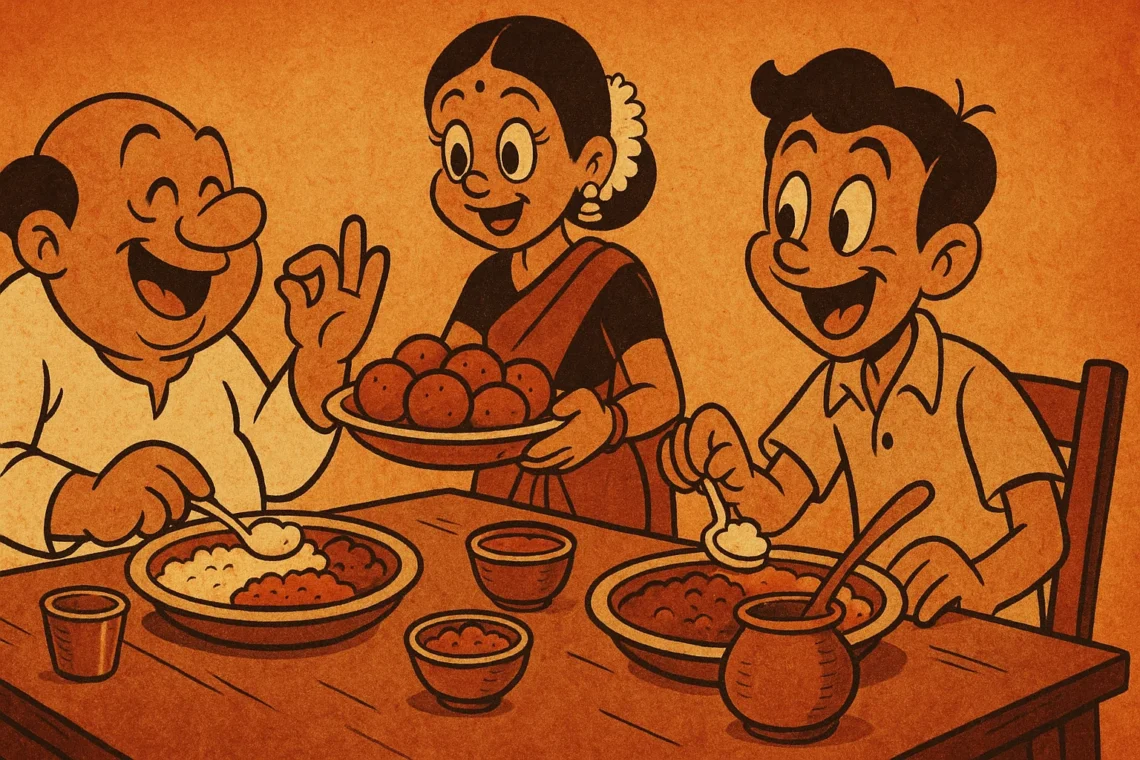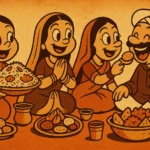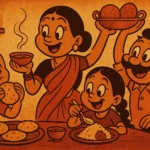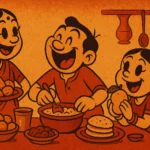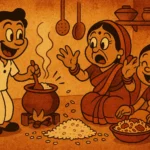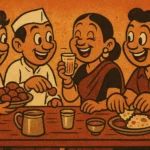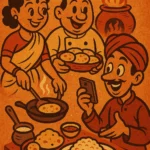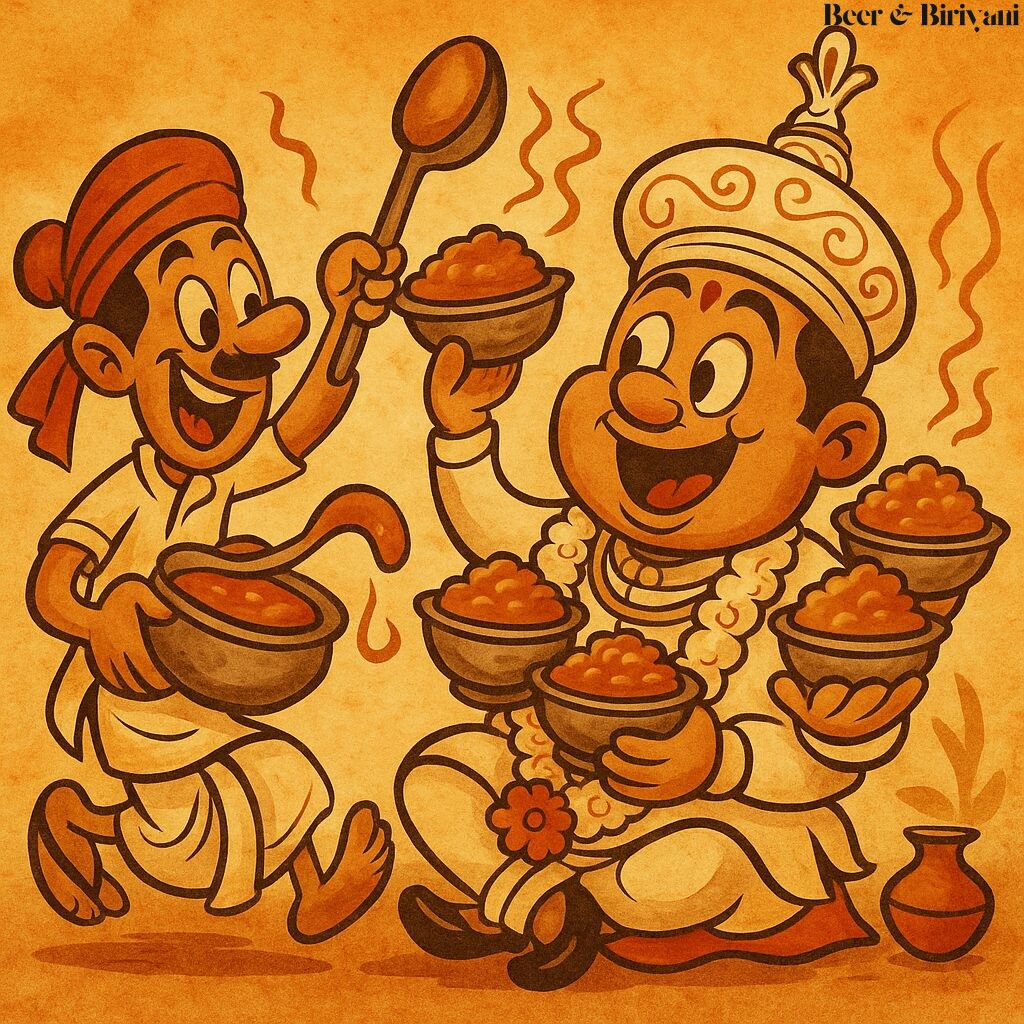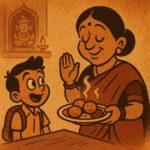In most Indian homes, saying “no” to a second helping isn’t always the end of the conversation. It’s the beginning of a quiet negotiation — part manners, part theatre, part deep-rooted cultural choreography that turns a simple meal into a multi-act drama. Because in our families, food is rarely about hunger. It’s about love. And love, as every Indian host knows, is measured by how many times you ask, insist, and finally guilt someone into taking “just a little more.”
The first helping is expected. But it’s the second helping that reveals everything: the host’s warmth, the guest’s manners, the invisible push-pull of “I shouldn’t” and “Okay, just a spoon.” This isn’t just about food. It’s a social dance, and everyone knows the steps — whether they admit it or not.
“No” Never Really Means No
Try saying, “No thanks, I’m full,” after your first round of rice. Watch your host smile politely and proceed to serve you more anyway, muttering something like, “Just a little, beta.” You protest. They ignore you. You both know what’s happening — and it’s all part of the script.
In our family, second helpings are less about appetite and more about approval. If you go for seconds on your own, you’re saying: “This food is so good, I couldn’t resist.” If you refuse a second helping too aggressively, it might be interpreted as disinterest — not in the food, but in the person who made it.
The Host’s Side: The Spoon That Persuades
My mother had a signature move. She’d hover with the serving spoon mid-air, tilt her head, and say, “Arrey, this is the last bit. Don’t make me put it back.” She didn’t need to say more. It was never the last bit, but the emotional blackmail was light, effective, and rooted in care. You took the spoonful — not because you were still hungry, but because you didn’t want to insult her affection, which had just been expressed in the form of perfectly roasted bhindi.
And there was always a ranking: some dishes were mandatory for seconds (like her sambhar); others, optional. But God help you if you passed on the one thing she’d made “especially for you.” There’s no polite exit from that scenario.
The Guest’s Side: How to Refuse Without Refusing
The art of declining a second helping — without actually declining it — is a cultural skill passed down through generations. You learn to put your hand gently over your plate and say, “Bas, bas, bohot ho gaya,” even as you’re making space for the spoon. You learn to accept with a sheepish smile and the classic line, “Only if you’re eating too.” You learn to lie, just a little, for the sake of harmony: “I skipped lunch today,” even if you didn’t.
And of course, if you’re the youngest at the table, you’re fair game. No one cares about your protest. Second helpings are practically flung onto your plate. Thirds are not out of the question. You’re growing, they say. And later, when you complain about being too full, they say, “Good. That means you ate properly.”
Second Helpings and Family Hierarchies
Second helpings also expose the pecking order. The eldest get asked first. The guests get more than they asked for. The newly married are fed with slightly exaggerated attention. And the cook — usually the one who’s been on their feet for hours — gets served last, with everyone saying, “You sit now, we’ll serve ourselves,” which is never true. The cook ends up serving anyway. That’s also part of the ritual.
Now I’m the One With the Spoon
In my own kitchen today, I find myself channeling that same impulse. Friends say “no,” and I say, “One more bite, come on.” I never ask once — I ask twice, maybe three times. Not to be pushy, but because I want them to feel what I once felt: that the host cares. That refusing seconds isn’t rejection, it’s ritual. That there’s always more in the pot, and more to give.
I’ve even started recognizing the difference between a real no and a polite no. There’s an eyebrow raise, a plate nudge, a shoulder shrug — all social signals embedded in the way we eat. Reading them is its own fluency. Offering seconds, gracefully accepting them, refusing them without offense — these are not just gestures. They are language.
Food Is the Medium. Second Helpings Are the Message.
In the end, second helpings are about more than generosity. They are about acknowledgement. About saying: you matter enough for me to make a little more. About receiving that love with humility and maybe just a little ghee on top.
So next time someone insists on giving you more, don’t resist too hard. Smile, lift your plate, and say, “Okay, but only a little.” Because that second helping? That’s where the real flavor lives.
Born in Mumbai, now stir-frying feelings in Texas. Writes about food, memory, and the messy magic in between — mostly to stay hungry, sometimes just to stay sane.

